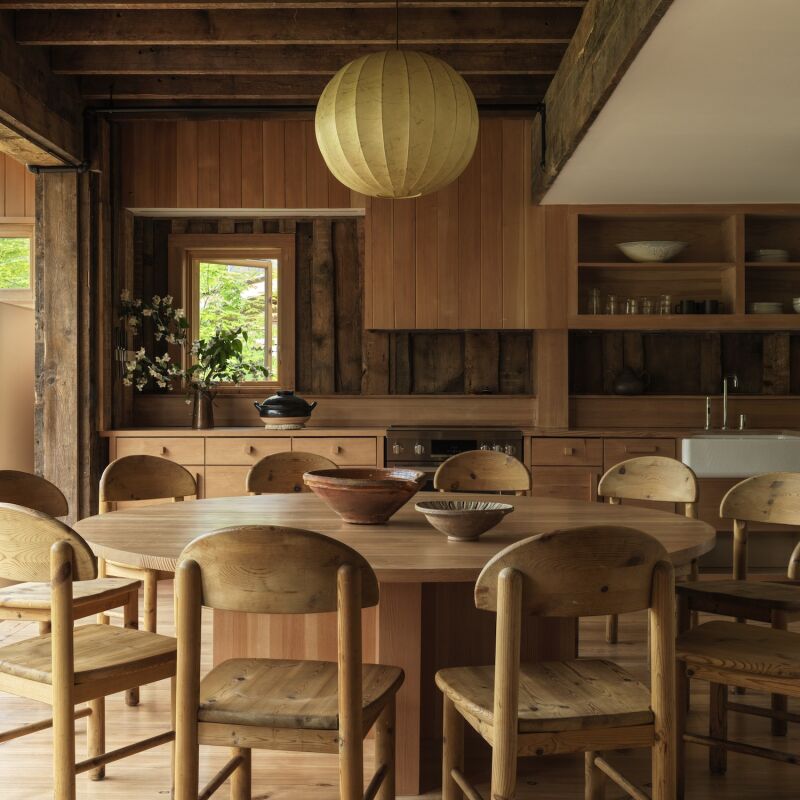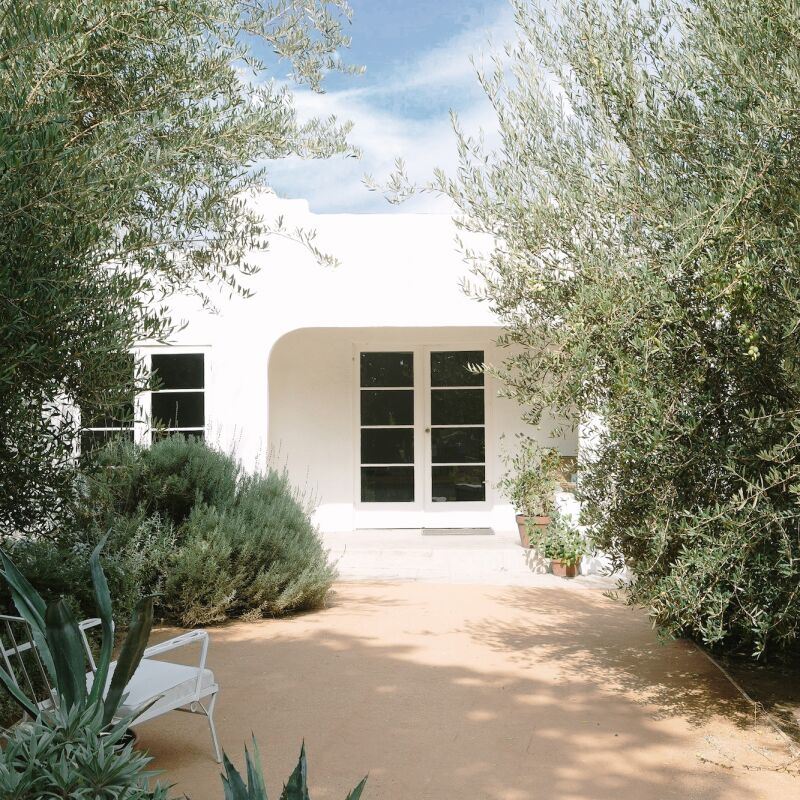It was a gray waxed canvas tote that first caught my eye thanks to its leather strap made from a World War II gun sling. That was at a trade show several years ago, where Margaux and Walter Kent of Peg and Awl were also showcasing wooden bath trays, “apothecary cabinets”, and rope tree swings, all of which looked as if they had been created by nostalgists with very good taste. “Our work is made from old things found and recovered from misfortune and neglect,” they explain. “When the old eludes us, we use sustainable materials. We started making these items for ourselves and now we make them for everyone.”
Margaux is an artist-jewelry designer-book binder and Walter trained as a woodworker under his father and did time in the U.S. Army in Iraq. They met 12 years ago, just after Margaux had sunk her savings into an 1850s row house in Philadelphia’s not-yet happening Fishtown. Walter moved in a week later, and they’ve collaborating ever since, now accompanied by their sons, Søren, 11, and Silas, 9.
The house was their living quarters, initial work space, and ongoing project—it had been added onto over the years, and the previous owner, a high school shop teacher, “trash picked historic doors and windows considered garbage,” says Margaux. “He used his finds to restore the rooms closer to their former, albeit frankensteined, self.” But the place needed a lot of attention, particularly the kitchen and warren of surrounding spaces. That was tackled in stages over time—and was recently completed just as the family decamped for country living outside of Philadelphia. They still have their workshop in a converted factory in the city, and have held on to the house, which serves as the Peg and Awl “living showroom”—and is available on Airbnb. Join us for a tour of its charmingly new-0ld kitchen.
Photography courtesy of Peg and Awl.

The wide-plank pine floor is original to the house, which in the 1920s belonged to a bootlegger (“a barrel that’s still hidden in the basement rafters held the illicit hooch,” says Margaux). The couple’s biggest remodeling move was to take out the two walls separating the dining room from the kitchen and pantry. The kitchen’s concrete and steel truss in the background was introduced to “support the story-and-a-half of brick wall above it.”

Case in point: the radiant-heated floor is made of slate chalkboards, “a half-inch thick and super durable and forgiving,” rescued from a derelict school in Quakertown, Pennsylvania. And the 3-by-4-foot butcher’s table was purchased by word of mouth from their local deli owner, who had long ago salvaged it from a neighborhood butcher shop.

Walter built the kitchen cabinets from salvaged Pennsylvania barn beams: the doors are American chestnut and the countertops are quarter-sawn white oak.


That’s Peg and Awl’s Mess Hall Knife Rack on the wall next to their spice-stocked Apothecary Cabinet, which, they explain, was “historically used to house medications, elixirs, herbs, and the like in the days before drugstores.” Pots and pans hang from old butcher’s hooks found at a flea market.

“For years I worked with my dad on historic renovations, and we did many, many kitchens” he says. “When it came time to work on our own, we recruited my pops and incorporated so much of what I loved from our projects.”

As you can imagine, laying the floor was a feat. Walter tells us: “First we had to reinforce the joists from the basement to make sure that they could hold the weight. We ran radiant heat tubing along the whole floor and poured a two-inch cement wet bed on top of that. Then we laid the slate chalkboards; each one weighs around 100 pounds and is about 3-by-5 feet. Getting them level and flush with each other on all four sides took a lot of patience—and a handful of pennies that we used as shims.”
Before


The Kent Family

Tour the rest of the Peg and Awl House on Airbnb; it sleeps eight and rents for $185 a night.
More kitchens that incorporate old and new:
- Embracing the Old with Quintana Partners
- L.A. Story: A Budget Kitchen Makeveor, DIY Countertop Hack Included
- Steal this Look: A New York Kitchen with Old-World Charm




Have a Question or Comment About This Post?
Join the conversation (0)